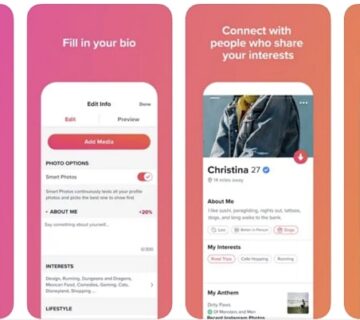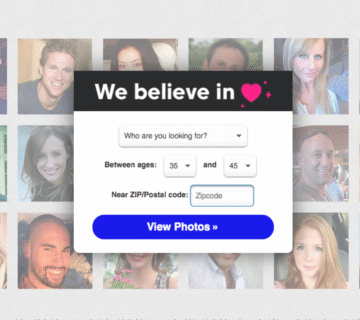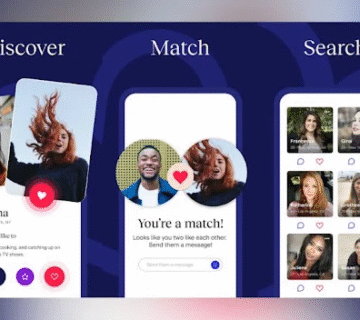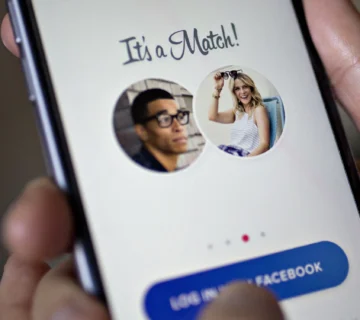In online dating, communication is about much more than just words. Emojis—especially the classic smiley face—play a big role in how singles flirt, break the ice, and establish connections. If you’ve seen a smiley face on Match.com and wondered what it actually means, how to interpret or use it, and whether it can make or break a match, you’re in the right place. This in-depth article answers all your questions, offers tips for making your profile more attractive, and gives expert advice on using emojis safely and effectively in your digital dating journey.
Quick Answer: Smiley Face = Friendly, Open, and Approachable Interest
On Match.com, a smiley face—whether sent in a message, included in a bio, or used as a reaction—signals warmth, friendliness, and often gentle flirtation. The smiley face is one of the most universal digital “green lights” for further conversation. Unlike a heart or wink, it’s a low-pressure way to show you’re approachable, open to connecting, or gently interested in more.
-
Use of smileys softens the tone, makes you seem kinder, and helps you stand out among many dry or generic profiles.
-
Statistically, singles who use smileys get more responses and have more dates than those who don’t.
How Smiley Faces Work on Match.com
1. Sending a Smile (Action/Reaction)
Match.com lets members “send a smile” to break the ice—similar to “liking” a profile but friendlier and more casual. Recipients are notified, giving them an easy prompt to check out your profile or even return the smile.
When to use it:
-
You’re intrigued but shy about writing a first message.
-
You want to keep things light, not overly forward.
2. Smiley Faces in Messages
Adding a smiley emoji to a chat can do wonders for the tone—implying friendliness, fun, and a willingness to connect.
Examples:
-
“Great photos! Where was your last adventure?”
-
“I love hiking too! Maybe we’d make good trail buddies ”
3. In Your Bio/Prompts
Including a smiley face in your bio or prompt answers makes you appear more approachable and positive—traits people are drawn to on dating apps.
What Does It Mean When You Receive a Smiley Face?
If someone sends you a smiley on Match.com—directly in chat or as a reaction—it typically means:
-
They find your profile or pic friendly and inviting.
-
They’re interested, but taking a gentle, non-pressuring approach.
-
They might be shy or uncertain if you’ll reply to a more direct flirt.
A smiley can be a “soft open”: not heavy-handed, but a digital way to say “I’m here, and you seem interesting.”
Smiley Face: Flirtation or Just Being Nice?
This is a common question! On dating platforms like Match.com:
-
The smiley is rarely just platonic, especially if it’s paired with other friendly signals or shows up as a “sent a smile” action.
-
It is less intense than a heart or a wink, making it a safe, neutral flirt.
-
Context matters: If every message features a smiley, it might be the person’s general style—as always, check the whole conversation for intent.
Why Are Smileys So Effective in Dating?
-
Ease Nerves: They break tension and make awkward intros more comfortable.
-
Digital Body Language: As in real life, a smile is welcoming, lowers defensive walls, and encourages a reply.
-
Universal Appeal: The smiley is recognized across generations and cultures as positive communication, making Match.com a more inclusive space.
Data: Smileys Get Results
A prominent Match.com survey revealed:
-
Single emoji users go on more dates and report higher satisfaction in online dating than non-users (54% vs 31%).
-
Among emojis, the smiley face was the second most popular after winks for digital flirting, especially in opening interactions.
Using Smiley Faces Wisely: Tips for Success
1. Keep It Authentic
Use smileys naturally—overdoing it can seem insincere, but a genuine “” brightens any message.
2. Pair with a Question or Compliment
Make your outreach personal: “You have a great smile —any favorite local hiking spots?”
3. Use Them in Your Bio
Research shows profiles with smileys in the bio receive 10–15% more engagement on average.
4. Respond When You Get a Smile
Even a quick, friendly reply like “ Hey, thanks for the smile!” can easily lead to deeper conversation.
When Not to Send Smileys
-
In the face of clear disinterest or one-word replies; respect boundaries.
-
In very formal or somber contexts—stick with words if the topic is serious.
Red Flags: Can the Smiley Be Used By Bots or Scammers?
-
Sadly, yes. Some spam accounts on Match.com or other dating sites use overly friendly messages packed with smileys to feign trust and friendliness.
-
Stay alert for:
-
Weirdly generic or repetitive smiley-filled messages (e.g., “Hi, beautiful let’s chat money ”)
-
Requests to move off-platform quickly (like to WhatsApp)
-
-
Legit users combine smileys with substance—good photos, specific questions, and contextual replies.
The Science of Smileys in Dating
Several psychology and social science studies confirm that:
-
Smileys increase perceptions of honesty, warmth, and likability.
-
They make digital messages “feel” more human, closing the emotional gap technology sometimes creates.
-
Used early, a smiley face can increase first-message reply rate significantly, even compared with hearts, flowers, or more flirty emojis.
The Smiley in the Era of Gen Z and Beyond
-
Younger daters (Gen Z, Millennials) are especially emoji-forward, but even Gen X and Boomers know that smileys are non-threatening, positive openers.
-
As emoji use expands, classics like “” remain top-performing for bios and opening lines everywhere from Match.com to Tinder and beyond.
Most Popular Smileys for Match.com
| Emoji | Common Use/Interpretation |
|---|---|
| Friendly, positive, approachable | |
| Enthusiasm, open to chat, confidence | |
| Flirty, playful, mild interest | |
| Excited, genuinely happy | |
| Stronger affection, lots of interest |
For Best Practices in Safe, Genuine Online Communication
Before diving into emoji-filled conversations, brush up on safe messaging and scam avoidance in online dating. The Federal Trade Commission provides the best, up-to-date advice for all digital daters:
FTC Online Dating Scams & Safety
Read More: What Age Group Is Match.com For? A 2025 Guide to Match.com’s User Demographics
Conclusion
The smiley face on Match.com is your go-to for a positive first impression, digital body language, and low-pressure flirtation. Use it authentically, combine with thoughtful conversation, and you’ll boost your odds of making meaningful connections. Above all, match safely and smartly—let your (smiley) personality shine!







[…] Read More: What Does the Smiley Face Mean on Match.com? Your Ultimate 2025 Guide […]